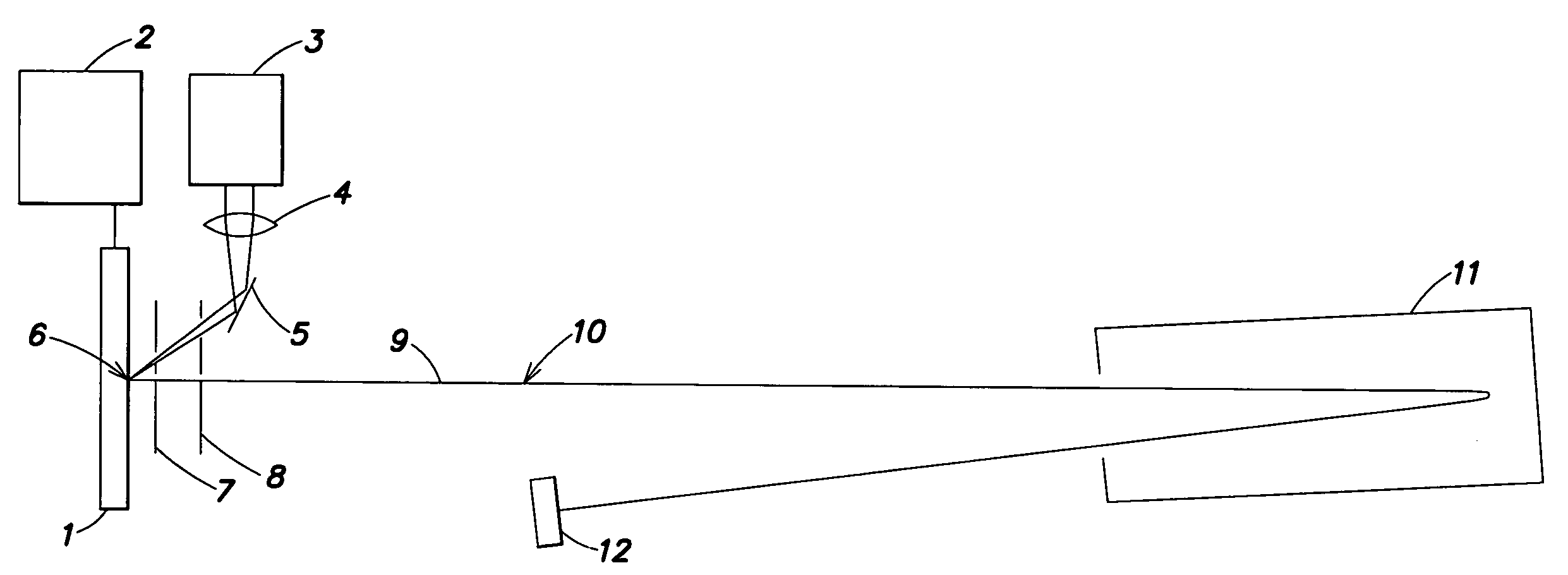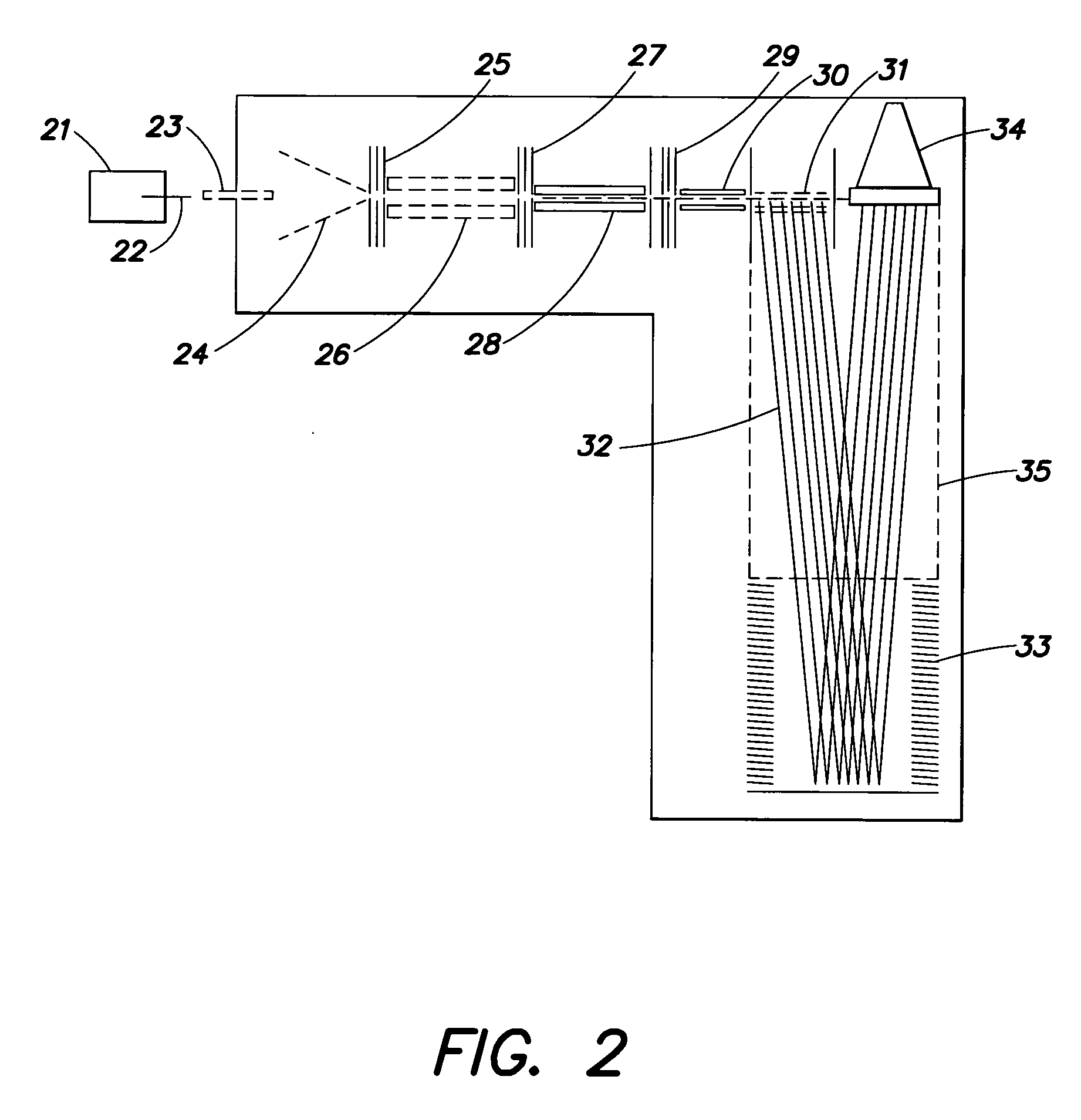Calibration curves for time-of-flight mass spectrometers
a mass spectrometer and calibration curve technology, applied in mass spectrometers, separation processes, separation of dispersed particles, etc., can solve problems such as inability to use calibration curves, large residual errors, and equations such as complexity
- Summary
- Abstract
- Description
- Claims
- Application Information
AI Technical Summary
Problems solved by technology
Method used
Image
Examples
Embodiment Construction
[0026]The manner of operation of a MALDI mass spectrometer for the analysis of analyte substances whose masses are to be determined as accurately as possible is described using the schematic representation in FIG. 1. The substances under analysis are prepared together with matrix material on a sample plate 1. These preparations are termed “samples”, and there can be many samples on a single sample plate. Every sample can contain large numbers of analyte substances. They are introduced into the ion source of the mass spectrometer together with the sample plate 1. In particular, one of the samples can be a calibration sample containing a large number of calibration substances whose masses extend reasonably evenly over a wide mass range without any interfering superpositions, and are precisely known.
[0027]Light flashes from a laser 3 are focused by a lens 4 and directed by a mirror 5 onto a sample 6 on the sample plate 1, causing analyte molecules of this sample 6 to be desorbed and io...
PUM
 Login to View More
Login to View More Abstract
Description
Claims
Application Information
 Login to View More
Login to View More - R&D
- Intellectual Property
- Life Sciences
- Materials
- Tech Scout
- Unparalleled Data Quality
- Higher Quality Content
- 60% Fewer Hallucinations
Browse by: Latest US Patents, China's latest patents, Technical Efficacy Thesaurus, Application Domain, Technology Topic, Popular Technical Reports.
© 2025 PatSnap. All rights reserved.Legal|Privacy policy|Modern Slavery Act Transparency Statement|Sitemap|About US| Contact US: help@patsnap.com



